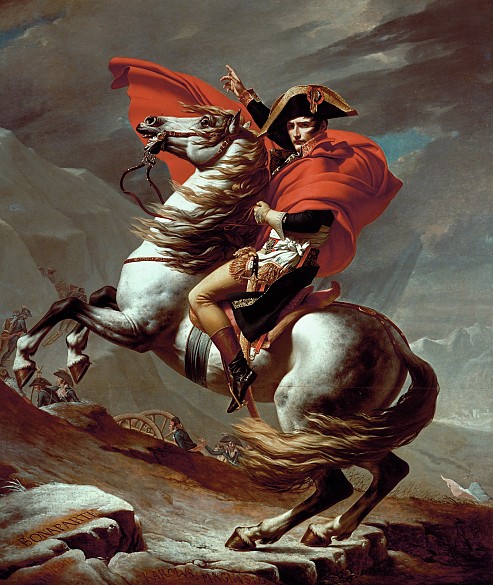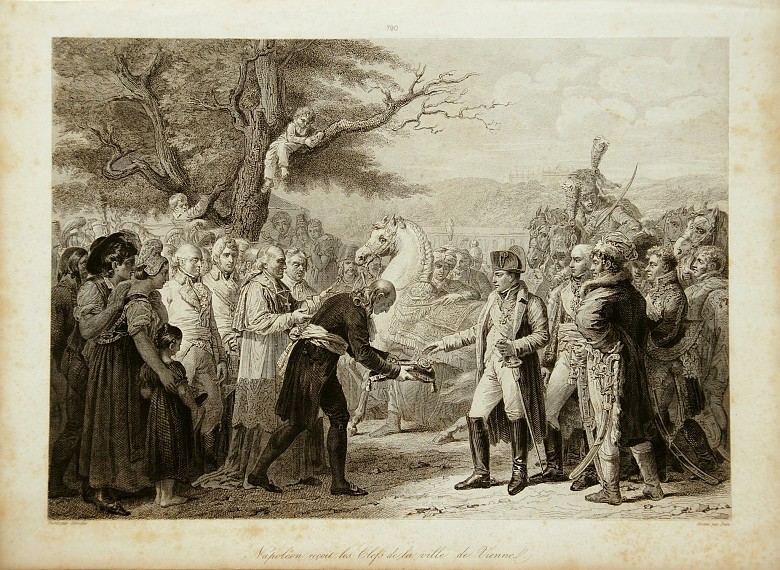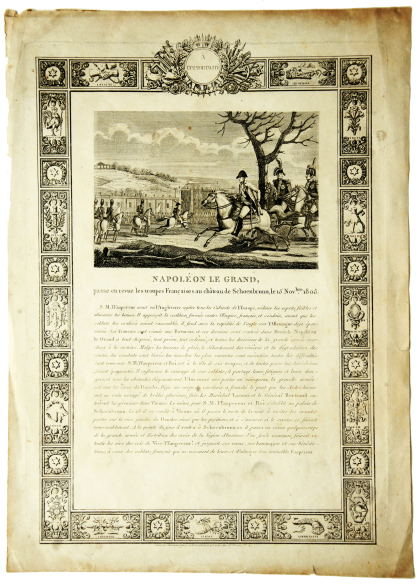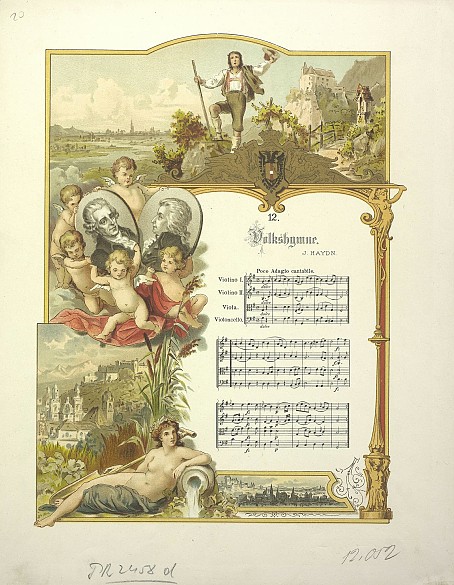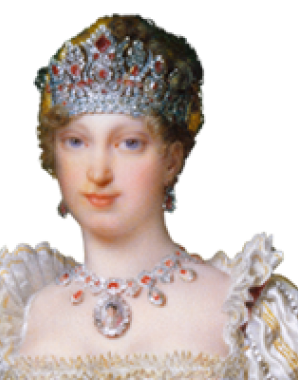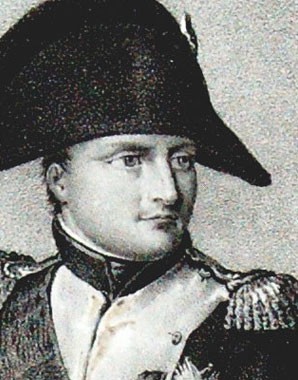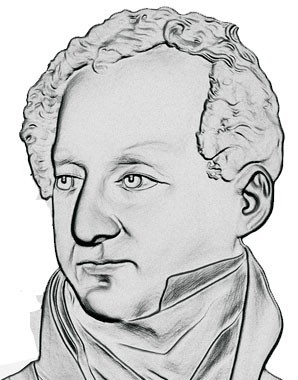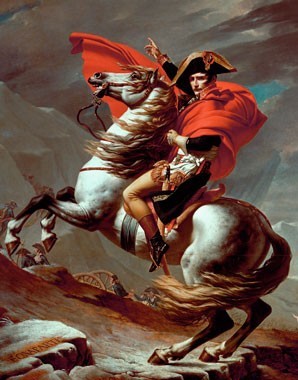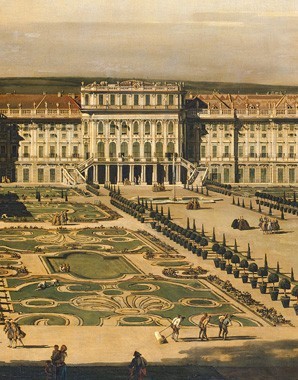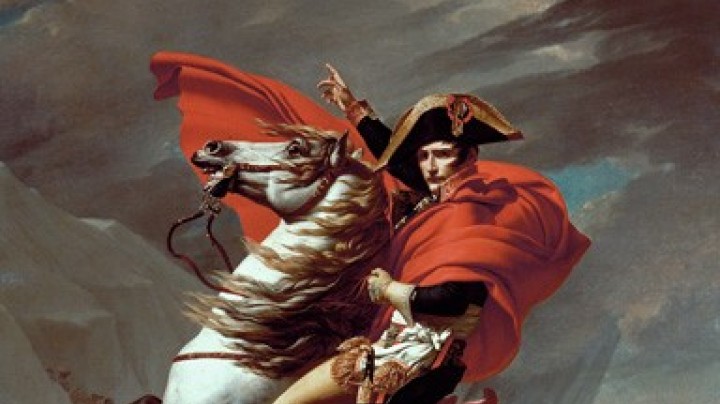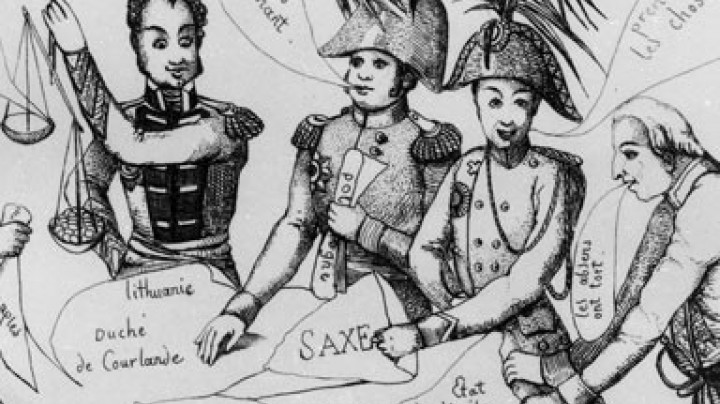Aux armes, citoyens – Citizens, to arms!
In the war against the French Revolution and Napoleon, Austria was pushed further and further out of western Europe.
Refrain of the Marseillaise, the present-day French national anthem. It originated as a battle-song for the war against Austria.Aux armes, citoyens,
Formez vos bataillons,
Marchons, marchons!
Qu’un sang impur
Abreuve nos sillons![Citizens, take up arms, form your battle squads, let us march, let us march! May an impure blood drench our furrows.]
The established European rulers saw the French Revolution as a great danger, fearing similar attempts to overthrow them in their own territories and anticipating the threat of invasion by Napoleon. These fears turned out not to have been unfounded: on 20 April 1792 revolutionary France declared war on the Austro-Prussian coalition. Europe’s monarchs responded with a variety of alliances and there followed a long period of war.
In 1796/97 Napoleon scored his first major success in forcing Austria to withdraw from northern Italy and accept the peace of Campoformio. The year 1804 saw Napoleon making himself Emperor of the French and successfully winning over to his side certain powers in the Holy Roman Empire, notably Bavaria, Baden and Württemberg. For the Habsburgs, France’s victory at Austerlitz – the Battle of Three Emperors – meant further territorial losses amounting to an area recorded as being around one thousand historical ‘square miles’ (55,000 km2 or 21,230 square miles in present-day terms) with three million inhabitants: Venetia, Istria and Dalmatia went to France and a number of western territories including Vorarlberg and Tyrol to Bavaria.
From 1806, Vienna became the centre of resistance to Napoleon. Propaganda was used to make the war into a ‘people’s war’, with poets and journalists seeking to awake feelings of patriotism amongst the people. One such endeavour was Joseph Haydn’s imperial anthem. However, the populace were not so easily persuaded to join the fight against Napoleon and to put up with the concomitant privations: when the French commander took up residence at Schönbrunn during the two occupations of Vienna in 1805 and 1809, not all the Viennese were unhappy about his presence.
In the meantime, Prince Metternich had taken charge of Austrian foreign policy – 1809 saw yet another Austrian declaration of war, which once again led Austria on to disaster. At the treaty of Schönbrunn, another two thousand ‘square miles’ (110,000 km2 or 42,460 square miles in present-day terms) with 3.5 million inhabitants and access to the sea were lost – laying an enormous burden on the country as a whole. As there were no prospects of joy on the battlefield, the Emperor tried another approach, sacrificing his 18-year-old daughter Marie Louise to be Napoleon’s bride. Although this alliance led to Austria taking part in Napoleon’s Russian campaign of 1812, the Habsburgs subsequently changed back again and returned to the grand coalition against the French. Et voilà – the year 1815 saw Emperor Franz on the side of the victors, though the long wars had imposed enormous burdens on his state coffers.
